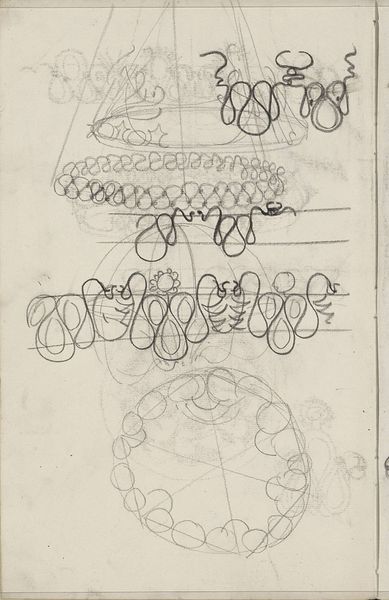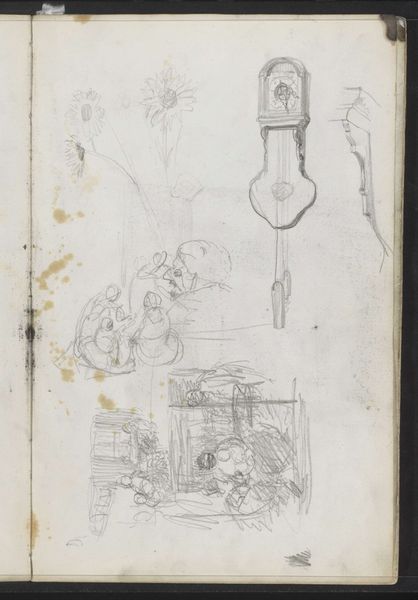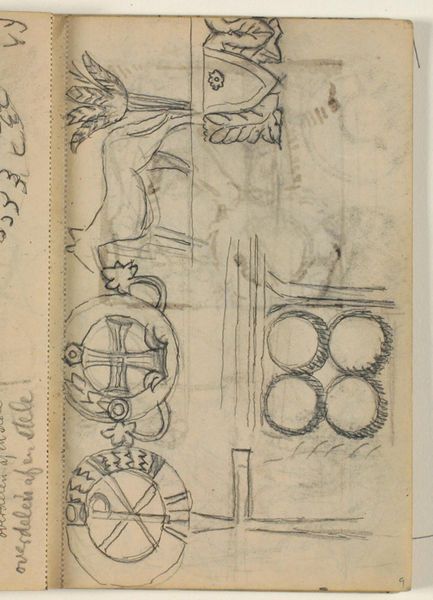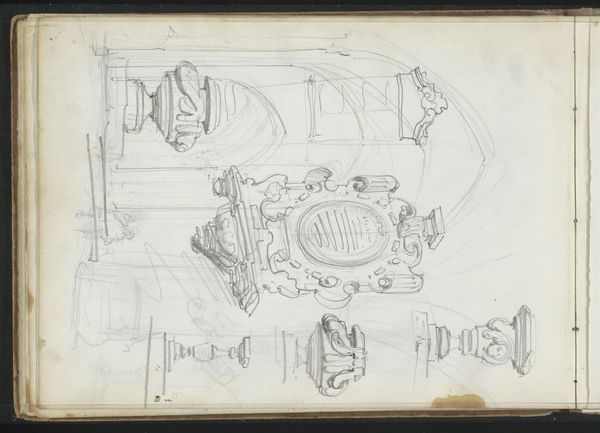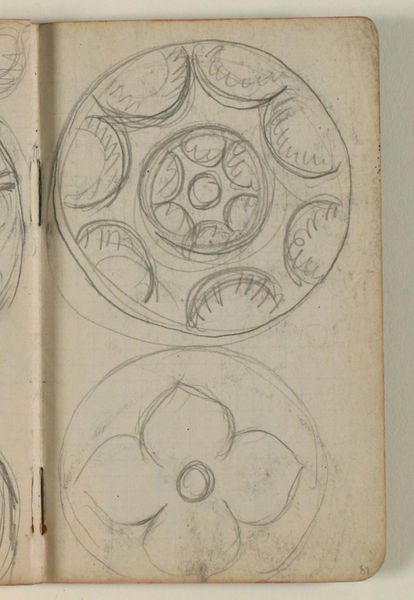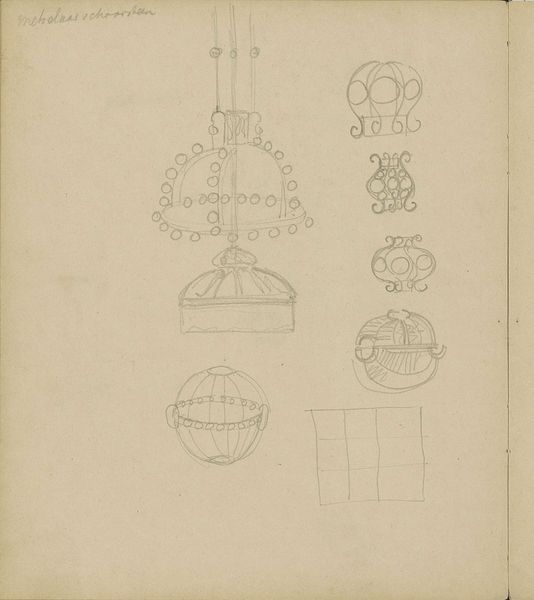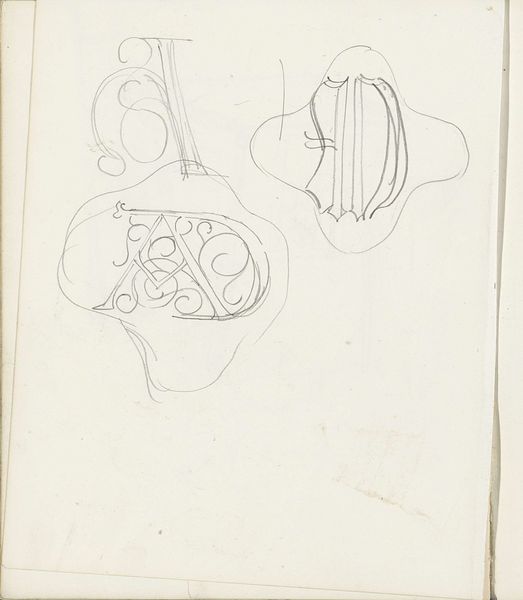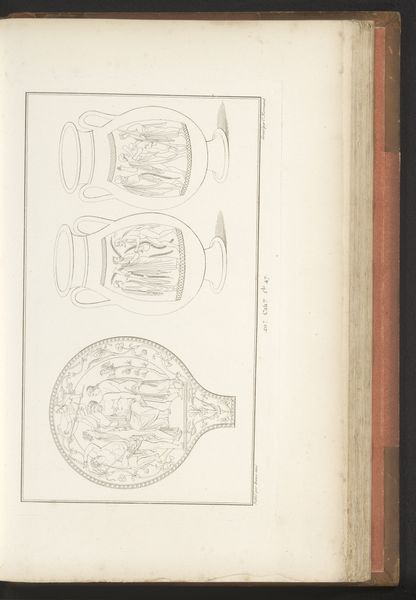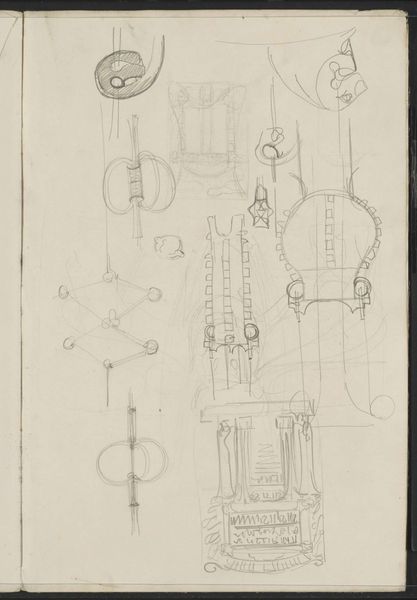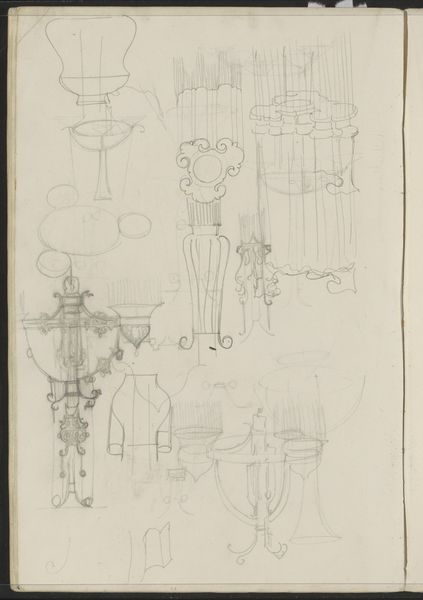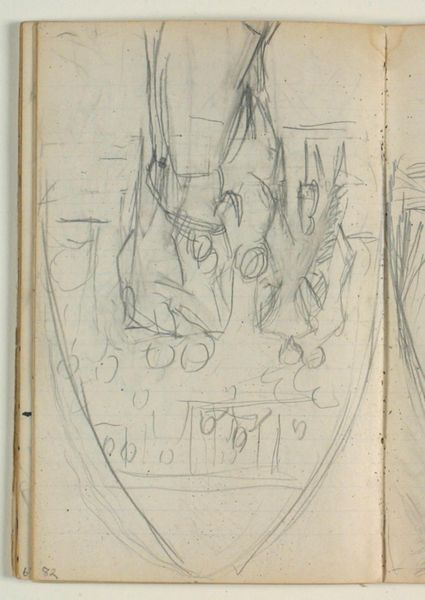
drawing, paper, pencil
#
drawing
#
art-nouveau
#
pen sketch
#
hand drawn type
#
hand lettering
#
paper
#
personal sketchbook
#
sketchwork
#
ink drawing experimentation
#
pen-ink sketch
#
pencil
#
line
#
pen work
#
sketchbook drawing
#
sketchbook art
Copyright: Rijks Museum: Open Domain
Curator: Immediately, I’m seeing rhythmic doodles… like preparatory sketches by a particularly imaginative jewelry maker. Editor: Let’s dive in then! This drawing, “Ontwerpen voor decoraties voor een hanglamp,” or “Designs for Decorations for a Hanging Lamp,” hails from around 1895. It's by Carel Adolph Lion Cachet, held within the Rijksmuseum, rendered using pencil and ink on paper. Curator: The way the designs explore circularity and looping, almost knot-like structures… It’s a study in form, the pure geometry of decoration before it becomes a functional object. The sketch-like qualities, those iterative lines, it makes the creative process itself almost tactile. Editor: Absolutely. It echoes Art Nouveau’s embrace of organic, flowing forms. You see it particularly in those curvilinear shapes meant for, presumably, the lamp's structure. Each flourish, each line, strives for elegant harmony within these predetermined geometrical limits. Curator: And it’s fascinating how the work blends geometric severity with free-flowing invention, typical for Art Nouveau, as you said. The structuralist in me just loves those layers! The implied top-down hanging assembly almost turns the design into an unrealised sculpture. The composition really highlights an almost obsessive exploration. Editor: True, the piece conveys that spirit beautifully. It almost invites the viewer to imagine these decorations bathed in light. Almost as if each loop would become a source, projecting shadows that dance around the room. A real moment frozen, you know, an insight into the creator's mind and intention. Curator: Right. These were just preliminary sketches. Yet they still reflect so clearly an artist's perspective within defined geometrical forms and potential industrial production, really highlighting those essential material qualities and intended aesthetic design. Editor: Which allows you, or anyone, to perceive, reflect and feel an early twentieth-century cultural aesthetic which may, or may not, inspire you for whatever new cultural aesthetic! Curator: Well said! Now I find I appreciate the artist's subtle touch more than when I first laid eyes on these simple and very pleasing designs. Editor: Indeed, perhaps we, ourselves, have even illuminated Cachet's intended work beyond its intrinsic form.
Comments
No comments
Be the first to comment and join the conversation on the ultimate creative platform.
